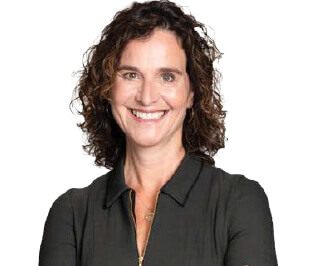Stopping the slide
It’s a rare marketer that can achieve anything alone. In any sizeable enterprise, for every marketing endeavour, there will inevitably be a cast of specialists to reach out to, team up with, negotiate and compromise alongside.
If the endeavour is product improvement, operations and finance will need to be involved. If it’s about getting service right, HR will be key, and finance, again, will have something to say. Pricing? You’re looking at ops, sales and finance. Supply chain? Ops. Distribution? Sales. Innovation? R&D, finance and regs.
And of course, if the marketing endeavour is communications, there will be a whole suite of talent needed on the outside: researchers, agencies, designers, production companies.
There is a difference, though, between working alongside those functions on the inside of the corporate domain, and the ones lined up eagerly to welcome your business on the outside. It is the difference between being a colleague and a client.
Colleagues, especially those in distant departments, can feel as much like competitors as collaborators. They guard their own budgets, pursue their own metrics, report against their own targets. Working with them is an artform, etched in dotted lines. The marketer – even at CMO level – has no sanction here. So, it’s always a tough grind of persuasion, persistence and barter to get even the smallest thing done.
To be the client feels so much more pleasant. Here our marketer is feted and flattered by clever, enthused, passionate professionals, bent on achieving great things. Yes, they can sometimes get stubborn, but the discussions can be kept civil: a client always carries a big stick, and it is a comfort merely to know it is there.
So, it is a rare marketer that doesn’t begin the slide towards prioritising this element of the totality of the marketing discipline. It’s understandable. A difference can be made fast, with all strands nicely under control.
People sometimes talk about the various marketing inputs as levers that can be pulled. But there are levers and levers. The ones with other colleagues’ hands all over them, often resisting movement, can be juddering and exhausting to manipulate. The lever of communications slides back and forth – especially forth – with blissful ease. What a lovely lever to behold – and hold.
Having been lulled towards just one aspect of the multidisciplinary skillset called marketing, the typical practitioner will feel the need to justify the bias and maintain the necessary flow of budget. Obligingly, the communications industry, through bodies such as the IPA and the Effies, has developed a suite of metrics to help.

These are usually presented under the heading of ‘marketing effectiveness’ – but ‘communications effectiveness’ is far closer to the truth.
As evidence of that, look at what marketers sometimes have to do to win one of those coveted effectiveness awards. They are obliged to isolate the communications effect, to prove that it wasn’t some other part of the mix – new format, better pricing, wider distribution – that helped create success. So, those other aspects of marketing get treated like confounders, polluting the purity of the communications effectiveness story.
At this point we enter a feedback loop. Others in the corporate firmament see the metrics marketers most enthusiastically deploy and the prizes they most avidly cherish and make reasoned assumptions. If marketers are tying their ‘effectiveness’ proof points to communications – if that’s what they’re most publicly measuring – then that must be the thing that really matters. So, the stereotype becomes ingrained: marketers are about ads and packs and slogans and media and messaging. Important, for sure, but not top-table fare.
You can see how the slide happens, and how it accelerates. A discipline that should be holistic becomes atomised; a profession that should reward fusion gives prizes away for isolation. It is the very opposite of what our discipline is about.
Marketing is hard precisely because it embraces many things at once. At its heart is the consumer, about as complex and capricious an entity as exists on planet Earth. As its context you have the market, a seething, shifting, merciless place, where competitors monitor your every move. Attempting to bestride this chaos is the organisation and its brands, with its own internal capabilities, priorities and constraints.
Marketers have to make sense of it all, and imagine, and then effect, the right combination of product, service, price, meaning and delivery to please those consumers, keep at bay those competitors, and meet the objectives of the business and the rightful demands of employees, communities and the environment.
The secret of great marketing is synthesis. The skill lies in pulling all those levers, just so, until the balance is right. In their hearts, most marketers know that. But it is a rare marketer indeed who knows how to pull it off.
